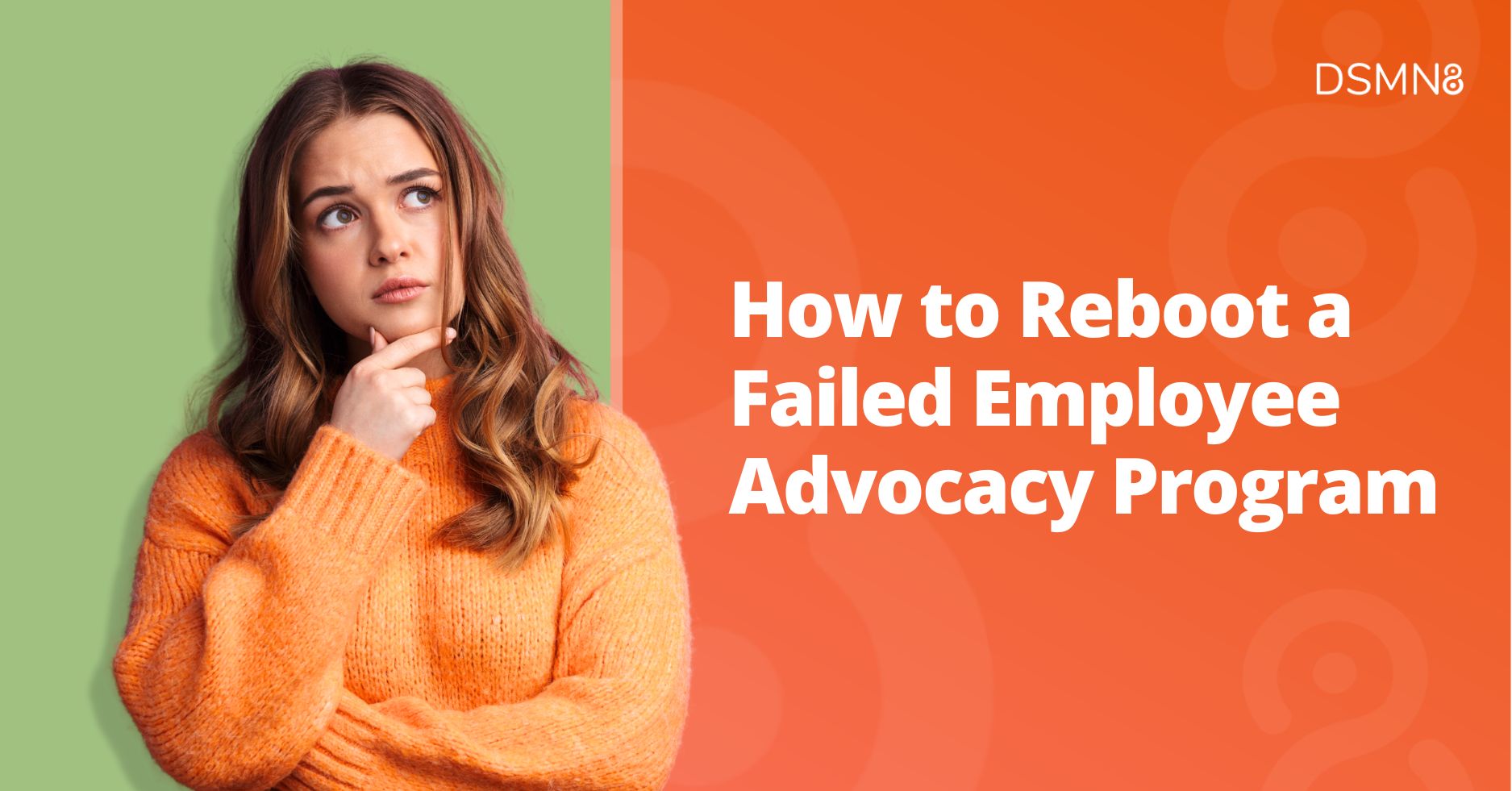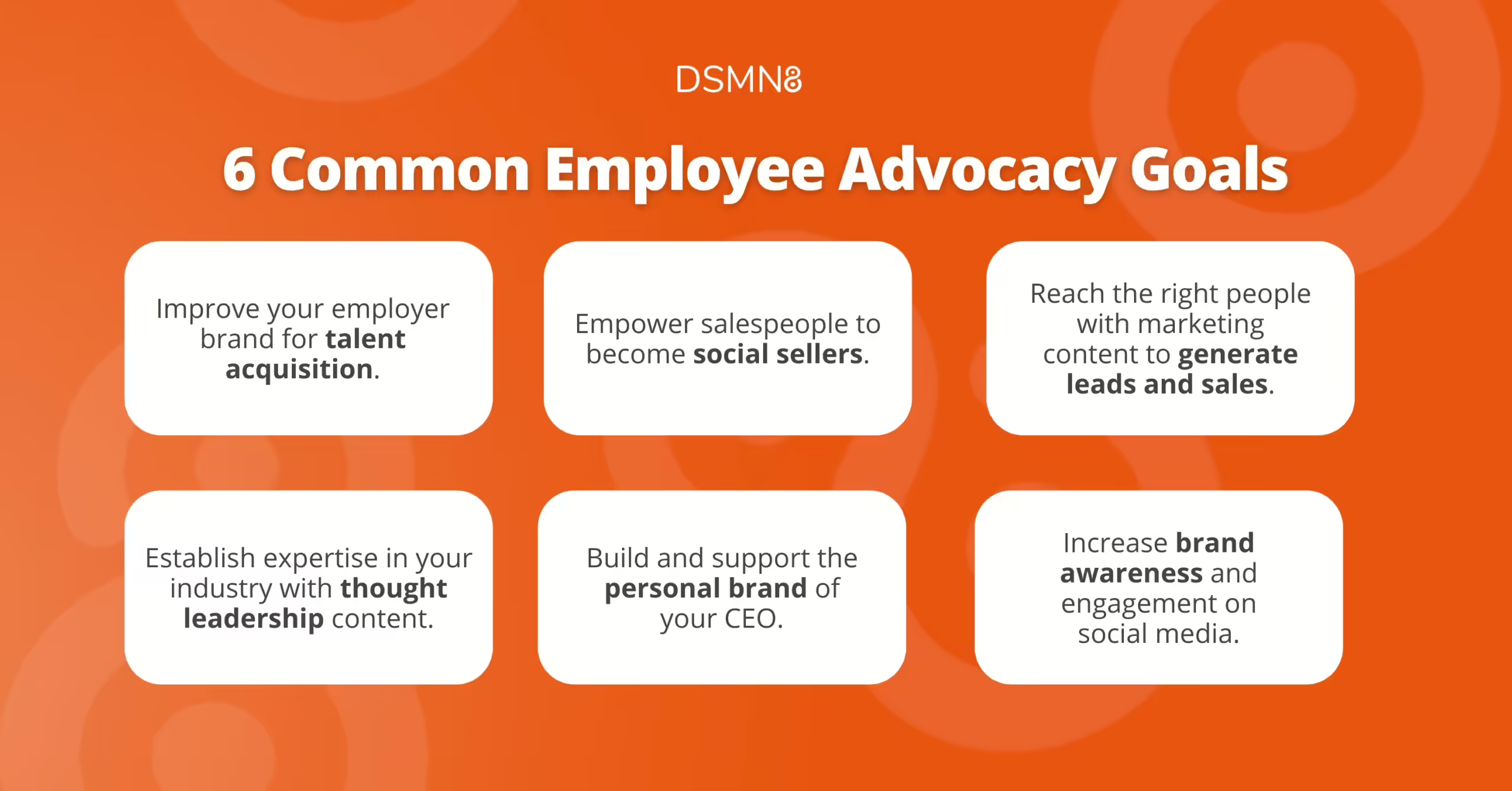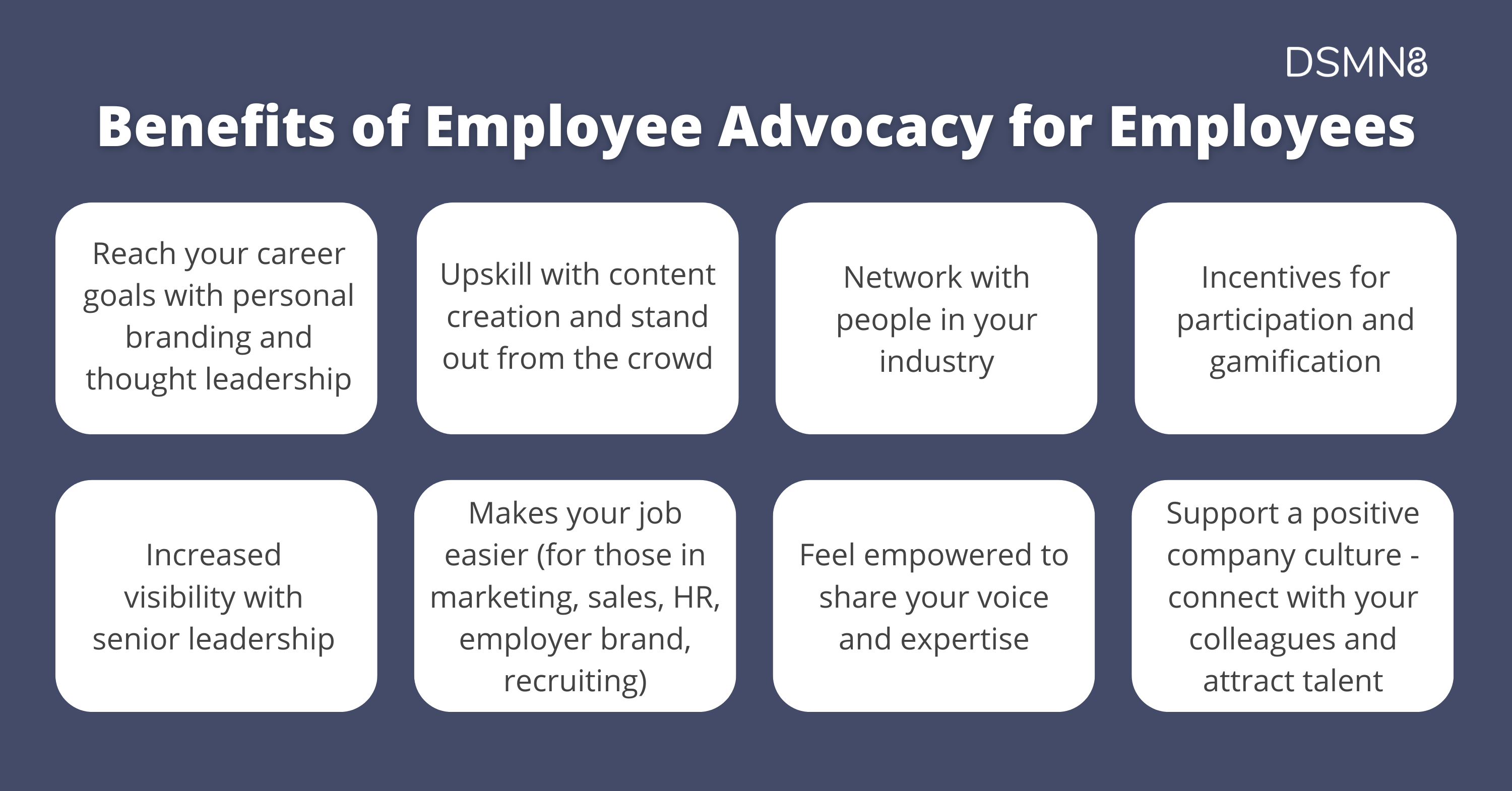
Is your employee advocacy program failing?
Are you not generating the results you’d hoped for, or worse, finding that your employees simply aren’t interested in joining? 😫
In this article, based on the Employee Advocacy and Influence Podcast episode below, we’ll provide a step-by-step guide to help reboot your employee advocacy program.
Keep reading or listen to the podcast episode:
Reasons You Should Reboot Your Employee Advocacy Program
There are a number of reasons you might consider rebooting your employee advocacy program.
It could be that you’re new to your organization and have just inherited a program from someone else.
Or perhaps you’ve been running your program for a number of years, and it’s falling flat.
You’re not seeing the desired results, so maybe it’s time to consider almost going back to the start and building it again.
Or maybe the technology you’re using hasn’t provided the necessary features and tools for managing your program, causing frustration among program admins and users.
In this case, migrating your program to a new platform is a great opportunity to refresh and relaunch the initiative.
Establish Why Your Employee Advocacy Program Isn’t Working
If your program has become stale and you’re considering rebooting it, it’s important to gain first-hand feedback by surveying the people who originally participated before you do that.
It’s easy to look for confirmation bias by asking people what they love about it and talking to the people who actively share content. But really, what you want to get from this is what made the program go stale in the first place.
So, you need to find people who originally participated but then stopped. Maybe they used it for a decent period of time before disengaging.
It’s easy to find people who tried the platform once and said, “Hey, it’s not for me”, but you want to look for employees who used it for, let’s say, six months or so and find out why they stopped.
It could be a technology issue. Maybe it’s the platform you used.
Or maybe you didn’t use a platform at all, and employees found it too time-taxing to find and share content.
But it could also be simply the content wasn’t good enough, and it didn’t resonate with them as individuals, so they didn’t feel comfortable sharing it.
Perhaps your content was too sales and marketing-focused, with a lack of third-party industry news or thought leadership.
Or maybe it was simply a lack of frequency, with your advocates not finding enough content to share on a regular basis.
It could even be the way you or your predecessor managed the program.
It’s crucial to collect that data to find out what went wrong the first time so you can stop history from repeating itself.
Use our Employee Feedback Survey template to help.

Create Your Game Plan
And then, almost as if you were starting from scratch, you really need to create a game plan and a set of objectives.
Why are you running an employee advocacy program in the first place?
It’s easy just to say, “We want our employees to be external ambassadors for the company”.
But to what end?
What are you looking to do?
Are you looking for your salespeople to be more active on social media so they can close more deals?
Is it because you want to attract more talent? Do you want to share more content about why somebody would work in your organization and the things that go on inside your business?
Start by creating that game plan. What content would serve these goals? How often would you provide content? Who will create that content?
Then, go to a select group of your previous advocates and get feedback from them.
So say, “Hey, this is what we’re thinking about doing. How would this have impacted you, and would this have kept you inside the program?”
By doing this, you’re able to build a much better program by using the learnings from your previous attempt.

The Sales Pivot! Why Motivation Is Now Different
The biggest challenge you’ll find is that when employee advocacy hasn’t worked for you in the past, there will often be a preconception that your new program won’t work, either.
However, the past few years have seen a huge uptick in social media use for professionals (especially LinkedIn), coinciding with the rise of remote and hybrid work.
The majority of C-suite executives are active on LinkedIn, with CEOs, in particular, generating huge engagement and reach.
And let’s not forget about salespeople:
In the past, salespeople would have more face-to-face contact than they do now. The shift brought about by the pandemic resulted in salespeople needing to differentiate themselves in a new way: online.
They’re building personal brands on platforms like LinkedIn because they want to be remembered by their customers and also by people internally—they want other people in their organization to know who they are.
So, somebody who may not have been motivated to join an employee advocacy program in 2019 could be highly motivated to do it now.

It’s all about Training and Planning
The next step is to build a communications plan.
Spreading the word internally about your program is crucial for getting colleagues on board, and changing any lingering negative perspectives caused by your previous attempt.
Your goal here is to show everyone what your new employee advocacy program is all about:
- The objectives.
- What’s changed, e.g. content, management, platform.
- Address the things that went wrong last time.
Most importantly, emphasize the benefits employees will experience from joining. People want to know what’s in it for them!
Follow the tactics in our User Adoption Playbook for the best results. Hundreds of successful programs use this strategy to scale advocacy throughout their organizations.
Then, it’s a matter of providing the appropriate training and resources to support your employee advocates.
One of the biggest reasons employees don’t share content is a fear of getting in trouble at work.
So, you’ll need to update your social media policy to clearly state that your organization encourages social media activity. Align with HR to make this new policy available for existing employees and new starters.
You can also provide social media guidelines to make employees feel at ease and ensure that any employee-generated content meets your expectations, such as using your brand logo correctly.
Finally, consider conducting training sessions with employees, focusing on how to use your platform (if applicable), how to optimize their LinkedIn profiles and content creation best practices.
Use our employee advocacy training plan for ideas, and find out if your platform provider offers training. We do!

Identify Your Employee Value Proposition
Not everything has to be about selling your product and closing deals 🙅🏻♀️
What we know is that it’s okay to do that maybe 20-30% of the time, but the rest of your content should be about establishing thought leadership, educating people, and potentially even entertaining people.
You could build a content framework so employees know what content will be in the program for them to share.
Finally, make sure you have established your value proposition for the program participants.
So, why share content? What value is it to the employee?
Don’t focus on the value to the organization.
Really focus on them as individuals and talk to them about how being an employee advocate is going to help them develop in their careers, both internally and externally, as they build their own social media community that they can leverage for years to come.
I hope that gives you lots to consider when considering rebooting a failed employee advocacy program.
If you want to know how effective your current social media efforts are, request a free employee advocacy health check.
We can show you how many of your employees are sharing at the moment, and what’s even more interesting is how that breaks down by seniority in your organization.
A blanket statement like “only 3% of people are sharing” is impactful, but many of those people may be very junior and may not be client-facing.
If you’ve only got, say, 5% of your senior leadership and C-suite sharing, that’s definitely something that I would consider needs addressing.
Ready to get started with employee advocacy?
But not sure if you’re ready for a platform?
Schedule a call with one of the team.
Prefer to cut to the chase and explore DSMN8?
Roger that!
More ways to improve your employee advocacy program:
Emily Neal
SEO and Content Specialist at DSMN8. Emily has 10 years experience blogging, and is a pro at Pinterest Marketing, reaching 1 million monthly views. She’s all about empowering employees to grow their personal brands and become influencers.






